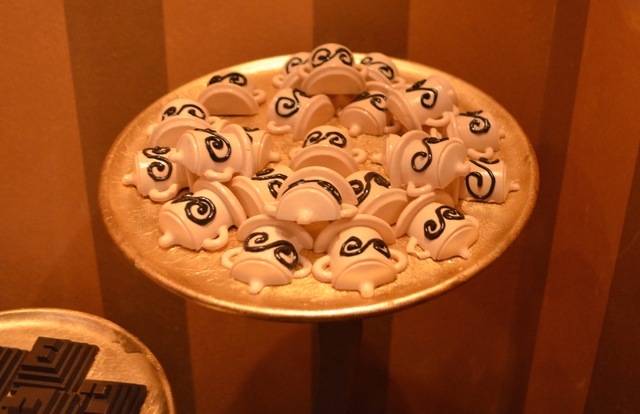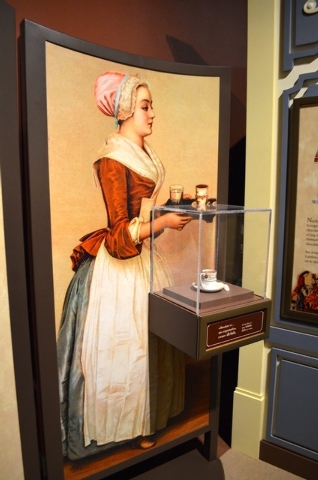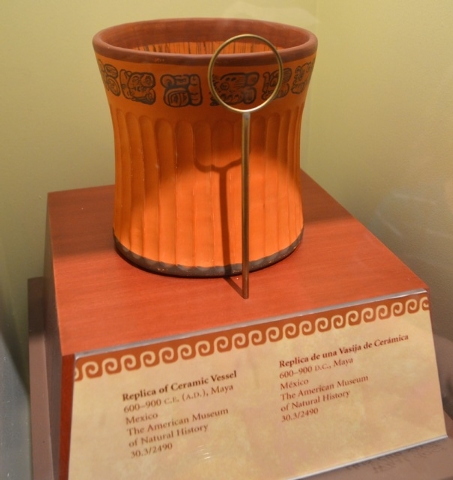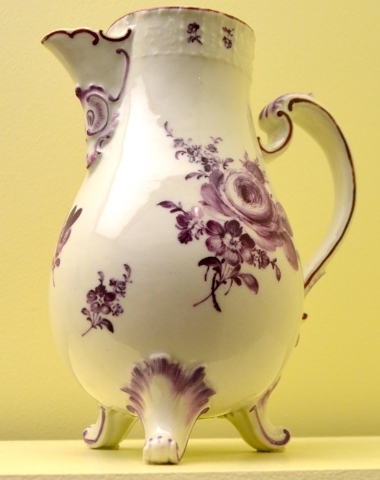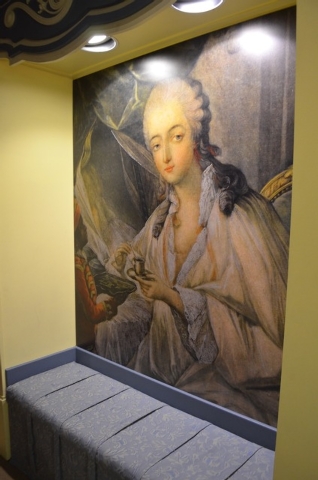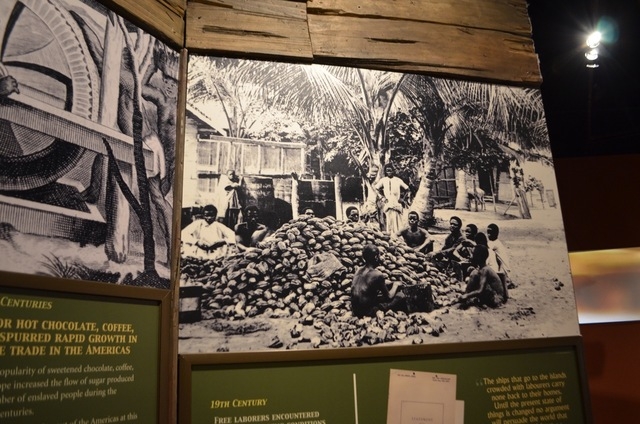Exhibit traces chocolate through the ages
As visitors to Chocolate: The Exhibition at the Springs Preserve check out vintage chocolate cups, saucers and warming pots, they may insist they can smell chocolate in the air. It’s not just their imagination.
“We did pipe in chocolate scent using technology similar to the scented air devices folks have in their homes,” said Aaron Micallef, curator of exhibits at the Springs Preserve, 333 S. Valley View Blvd. “It’s one way for visitors with visual impairments to engage with the exhibits and to provide a more immersive experience for all.”
The interactive touring exhibit focuses on the history of chocolate from its Mayan and Aztec past to its continued popularity today. It is set to be on display through May 3 in the Origen Museum at the Springs Preserve, 333 S. Valley View Blvd.
The exhibit is designed to be educational and entertaining to all ages. Micallef said that while summer visiting exhibits “tend to skew very young” to accommodate families seeking indoor activities during the hot weather, the rest of the year is more well-rounded.
“This time last year, we had the da Vinci exhibit, and content level-wise, Chocolate is very similar,” he said.
Visitors begin their tour with a look at where chocolate begins: in seed pods on the cacao tree.
“Cacao trees have flourished in Central and South America for thousands of years, long before people knew what luscious possibilities they held,” reads an exhibit display. “Chocolate is made from the almond-sized seeds inside cacao pods. Each pod holds 30-50 seeds — enough to make about seven milk chocolate bars.”
The trees grow only in tropical rainforests, where they get the perfect amount of rain, shade from the trees, humidity, nutrients and wind shelter.
Midges, a pest to many in Las Vegas, have a hand in pollinating the cacao flowers. They’re attracted to the moist dead leaves and rotting cacao pods on the forest floor, which is “just wingbeats away from the flowers they pollinate.”
The mix of dead plants and animals rotting on the forest floor also supports fungi growth, which helps cacao trees absorb nutrients from the soil.
Just past the faux cacao tree, visitors learn about man’s earliest known use of cacao.
Before chocolate was a sweet candy, it was a spicy drink. Some of the earliest known chocolate drinkers were the ancient Maya of Central America.
Mayans gathered cacao seeds from the rainforest and planted them in home gardens.
When the ancient village of Ceren was unearthed in El Salvador in 1976, clues to chocolate’s past were revealed, buried beneath volcanic ash.
“Among the ancient Maya, chocolate was enjoyed by rich and poor alike,” the exhibit explains. “A particular favorite of Maya kings and priests, chocolate played a special part in royal and religious ceremonies.”
Later, the Aztecs, who called it chocolatl, which scholars think is a Spanish combination of the Aztec word cacahuatl (bitter water) and the Mayan word chocol haa (hot water), used cacao seeds to pay tribute to Aztec rulers and as a currency in markets.
“Walking long distances with backpacks full of valuable cacao seeds, Aztec traders made attractive targets for thieves,” the exhibit explains. “So warriors often accompanied traders, protecting them as they criss-crossed Mesoamerica on their long journeys.”
Spanish conquerors brought cacao from the Americas, and Spaniards couldn’t get enough of the new drink. Nearly 100 years passed before the chocolate craze spread to the rest of Europe.
Travelers from Germany, France, England, Holland and Italy returned home from Spain with tales and samples of chocolate. Europeans added sugar and transformed hot chocolate into the sweet beverage we know today.
In the 1600s and 1700s, the wealthy people of Europe gathered in chocolate houses to enjoy the hot drink, socialize and gamble.
“It’s strengthening, restorative, and apt to repair decayed strength and make people strong,” Louis Lemery said of chocolate in 1702, according to an exhibit display.
Chocolate was considered an elegant way to wake up. In wealthy households, servants would deliver it bedside, where the elite would sip it instead of coffee, which was considered to be the morning drink of the working class.
The history of chocolate wasn’t all sweet. The exhibit points out that keeping up with the demand for confections resulted in the slavery of millions to harvest and process the cacao seeds and produce the sugar necessary to sweeten chocolate.
The exhibit concludes with a larger-than-life box of chocolates, albeit one without edible candy treats.
“We are prohibited from having food and drink in the gallery,” Micallef said. “But chocolate is available for purchase near the entrance to the Origen Museum and in the gift shop.”
Families can also indulge their sweet tooths with The Great Chocolate Play Dough Experiment weekend workshops.
“In that class, we talk about accidental science discoveries from penicillin to chocolate chip cookies and let the kids invent or create whatever they want with chocolate play dough,” Micallef said.
Chocolate: The Exhibition was developed by the Field Museum in Chicago and sponsored in part by the National Science Foundation. Ethel M Chocolates helped fund the Las Vegas portion of the tour.
Admission is free for Springs Preserve members or with paid general admission. The Great Chocolate Play Dough Experiment workshops are slated for 2 to 3 p.m. Saturdays and Sundays and cost $3 for members and $5 for nonmembers.
For more information, visit springspreserve.org or call 702-822-7700.
Contact View contributing reporter Ginger Meurer at gmeurer@viewnews.com. Find her on Twitter: @gingermmm.
If You Go
Chocolate: The Exhibition is set to be on display through May 3 in the Origen Museum at the Springs Preserve, 333 S. Valley View Blvd.
The exhibit is free for members or with paid general admission. Families are also invited to participate in the Great Chocolate Play Dough Experiment at 2 p.m. Saturdays and Sundays. The class is an additional $3 for Springs Preserve members and $5 for nonmembers. For more information, visit springspreserve.org or call 702-822-7700.



